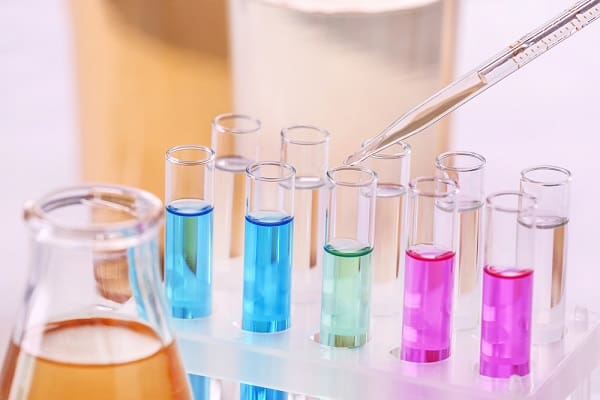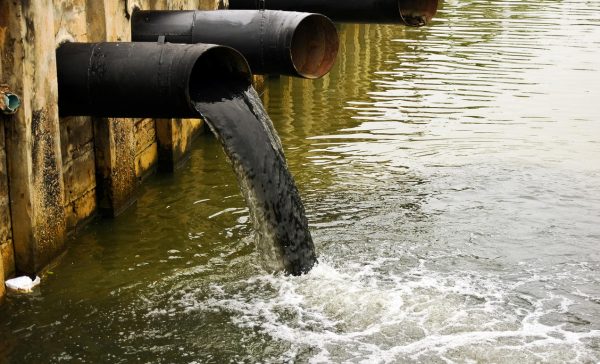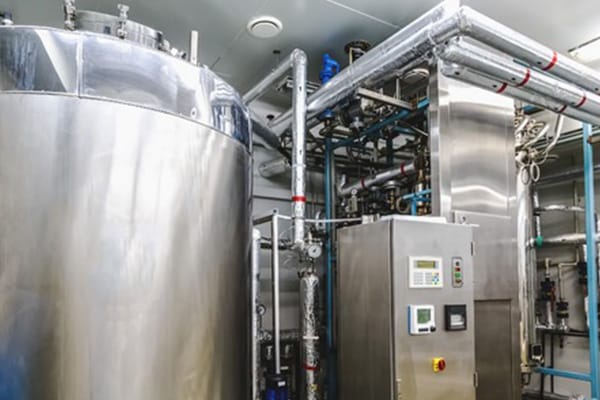The United States takes pride in having one of the cleanest and safest tap water in the world. Such a high standard in water quality comes with some caveats that you should consider, however. After the Flint water crisis, the Milwaukee cryptosporidium water supply infection, and the other such occurrences, the American public should make the difference between legally safe drinking water and reasonably safe drinking water. Water quality in the country and worldwide is even more important today, as it seems water and soap are the best weapons we have against the Covid-19 pandemic.
Let’s discuss today the water quality across the nation, the solutions we have to keep it safer for our children, our elders, and us, and, most importantly, the things we have to become mindful and aware of during the time of the pandemic.
Water Quality in the U.S.: What Is Legally Safe Water?

Testing dirty water in a laboratory
The Environmental Protection Agency is the organism ruling over the safety of your tap water. Under the EPA, we have standards and limits on almost all water contaminants. If you test your water and the results on each pollutant are below EPA’s threshold, you can consider your tap water safe to drink.
The problem becomes thornier when we discuss well water, however. In small rural areas where people rely on well water, the EPA does not have much to say. Homeowners should test their water annually to learn whether their water presents agricultural/industrial contaminants, pesticides, heavy metals, bacteria, viruses, total trihalomethanes, and more.
The Truth in Our Water
Recently, investigations in Iowa revealed that thousands of private wells across the state tested positive for coliform bacteria and nitrate, a chemical found in fertilizer and links to cancer and congenital disabilities. The EPA does not regulate private well testing or treatment. While most states do regulate the initial screening of a new well for bacteria and other contaminants, the follow-up testing is at the homeowners’ discretion. In other words, the approximately 43 million Americans relying on private wells for their drinking water live in an “every man for himself” scenario.
The EPA also neglected to regulate or limit PFAS discharges into the air and water. It tried, but it did not do a great job. PFAS – dubbed “forever chemicals” represents a wide range of human-made chemicals (almost 5,000) that industries use to manufacture everyday life items.
The problem with PFAS, as highlighted by health experts, is that they leach everywhere (air, water, and soil), they bio-accumulate, and nobody knows their decomposition timeframe. According to the Environmental Working Group, in 2019, 49 states in over 1,300 locations confirmed water contamination with PFAS compounds.
Does The Safe Water Drinking Act Really Protect Us?

As per the EPA’s Lead and Copper Rule, if lead concentrations in water at the tap exceed an action level of 15 ppb, systems must take additional action to control pipe erosion. The latest take on lead by the EPA and the CDC is as follows:
EPA has set the maximum contaminant level goal for lead in drinking water at zero because lead is a toxic metal that can be harmful to human health even at low exposure levels.
All good, officially speaking, until we realize that lead in drinking water is still a national problem bound to get worse. Newark is already bearing the terrifying moniker of “the next Flint,” and Pittsburgh comes rapidly from behind in terms of severe water issues.
Moreover, the problem with the Lead and Copper Rule, part of the Safe Drinking Water Act, is that the legislation only requires cities to test for the metals mentioned above every three years. It also requires officials to sample about 10% of all residences. As we all know, the EPA already has enough technical issues to access and process such data, not to mention the fact that some states do not report the data at all.
When it comes to the maximum contaminant level goals set by the EPA, health experts argue that legally safe water is not the same thing as safe water. In a world that is – or should be – concerned about children’s safety, we shouldn’t even talk about what is legal and what is not related to “contaminant levels.”
After all, how comfortable do you feel knowing you are drinking arsenic, bromate, chromium 6, radiological toxins, and TTHMs from your tap – even if they are well under the EPA’s legal limits and guidelines?
Water Quality in the US: Shouldn’t We Drink Reasonably Safe Water?

Would you instead drink legally safe water with some contaminants or clean water with no contaminants? Rationally speaking, your community water system cannot remove all pollutants, chemicals, VOCs, or microorganisms.
While most water treating facilities around the world use chlorine to disinfect the water, the substance cannot kill some bacteria or viruses. Lately, modern facilities started using UV filtration to sterilize the water. Nevertheless, old infrastructure, corroding pipes, industrial/agricultural runoff, natural disasters, and other issues contribute to contaminants accumulating in your drinking water.
Decaying infrastructure is one of the reasons why nearly 80 million Americans drink unsafe tap water. The Safe Drinking Water Act violations by water treatment facilities are more frequent than anyone would like to believe. However, they exist, endangering the health of people in every state across the nation.
People show more and more interest in the quality of the water they drink. According to a 2017 Gallup environmental poll, 63% of Americans worry “a great deal” about the pollution of their drinking water. After the Flint water crisis and other concerning media-uncovered stories about water contamination throughout the country, the American public shows a welcomed awareness.
How Clean is Your Water Anyway?

The poll paints quite a bleak picture. Drinking water pollution is still Americans’ “greatest concern.” Moreover, poor and minority Americans seem to be the most likely victims of heavy environmental pollution.
In this context, the Environmental Working Group has set different guidelines on drinking water safety than those established by the EPA. They call them “health guidelines” as opposed to legal ones. As a rule, the EWG sets lower limits on all contaminants in comparison to the EPA.
The best news is that you can learn about the drinking water contaminants in your area by entering your ZIP code in the EWG database. If you have any concerns about your drinking water, you should do the following:
- Ask for a water quality report from your community water system;
- Test your water using an independent laboratory or a home testing kit (although the latter may not offer you an extended report on all contaminants);
- Look for information about the levels of pollutants as set by both the EPA and the EWG.
Once you understand the contamination levels in your water, you should consider filtering and disinfecting it. The CDC warns that tap water may contain giardia, cryptosporidium, E. coli, and other bacteria and viruses, even if the water is, indeed, legally safe to drink.
Should You Consider a Water Filtration System in Your Home?

In the current American water crisis and the current pandemic, we all need safety precautions. Keeping our water safe is the least we can do now for our safety. Discussing the effects of water pollution on the environment is a more extended debate that we already tackled in part.
Let’s see a few details on how to keep your water safe in your home!
If you worry about the water quality in your home, water filtration systems may be the answer to your concerns. As we said, it all should start with water testing and understanding its contaminants and their dangers. According to health specialists, you should install water systems and UV filters in one or more of the following cases:
- Water tests showed high levels (legal or above the threshold) of lead, copper, chromium, or other heavy metals in the water.
- Upon testing your water, you found the presence of soluble pesticides, chemicals, radon, PFAS, and so on.
- You or someone in your household suffers from weak immune systems due to illnesses, HIV, or chemotherapy treatments.
- Your water looks, tastes, and smells odd.
What Are Water filters able to remove from the Water?
It all depends on the water filtration technology they use.
- Active carbon filters. Probably the most popular types of water filters out there, active carbon filters can clean your water of a wide range of contaminants, including heavy metals, chlorine, nitrates, pesticides, and more. Most types of filters – from whole house systems to water filter pitchers – use carbon filtration. They do not disinfect the water, however.
- Reverse osmosis systems. These filters strip your water of all impurities, leaving it clean but “dead” (it does not contain healthy minerals anymore). For good-tasting and healthy water, the RO system adds minerals back in the water in balanced quantities. RO systems manage to sanitize the water to some extent.
- UV filters. Such a device uses light radiation in the UV-C spectrum to inactivate bacteria, viruses, and cysts. The UV light disrupts microorganisms’ DNA, preventing them from multiplying. Such filters do not remove any contaminants in the water; they only kill living organisms. For this reason, UV filters work best in the company of other filtration systems.
- Water distillers. These devices boil the water, removing the contaminants through vapor. While they are capable of cleaning your water of some contaminants, they may also change the way your water tastes. Specialists recommend them only if tests showed your water to be clean and safe, but you want to take extra measures.
Some filters are POE (point-of-entry) – they filter the water before it comes into your house, so you enjoy filtered water at all faucets. Some filters are POU (point-of-use) – they clean the water at a specific location (tap). Faucet/showerhead water filters and under-sink filters are POU. Whole house water filters and some water descalers are POE.
Can You Use Water Filter Alternatives in Your Home?

Water boiling and water refrigeration may clean your drinking water from some impurities. Nevertheless, such methods will not help you remove dangerous contaminants such as heavy metals, radioactive elements, pesticides, PFAS, and so on. If you rely on well water for your daily needs, you need water filtration systems that can handle agricultural/industrial runoff, natural disasters (floods, for instance), soil contaminations, and more.
Since infrastructure decay and the exponential use of harmful chemicals do not seem to end anytime soon, it is better to stay safe than endanger your health, especially if it is fragile. Water filtration systems are more and more affordable and easy to maintain nowadays.
Reverse osmosis systems indeed waste some water to provide you with clean, mineralized water, but the technology advances fast enough to make them as eco-friendly as possible. Active carbon filters and UV filters are capable of providing you with the safety and protection you need. Nobody in the right mind would want another Flint case, but as we saw, we are still far away from enjoying safe, healthy water across the nation equally.
The Bigger, Scarier Picture: Water in Time of Covid-19

While we are all busy with understanding the Covid-19 pandemic and how to manage it, the conversation about water safety in the United States should not fall into a cone of shadow. We need to keep this discussion going as it is affecting us all. The pandemic will eventually become outdated, but our drinking water, as scarce as it is right now, is crucial to our survival.
The good news is that there is no proof that coronavirus survives or spreads through our drinking water.
On the contrary, water and soap is still our best bet against it – for whoever has access to clean water, as millions of people throughout the world do not. If the Covid-19 pandemic reminded us of anything, it pictured a dark image of our world.
Faced with an enemy we can fight against with the banal, every day, taken-for-granted water, we realize that water poverty and water pollution may be even deadlier than the virus. With nearly 1,000 children dying from preventable water and sanitation-related diseases, how can we expect to manage this pandemic or other, when the rule of thumb is proper hygiene?
Bottom Line
People in developed countries enjoying constant municipal tap water know we have enough contaminants in our water to date to become at least mindful and aware of what we use, we drink and give our children to drink every day. And we are all (or should be) increasingly aware that ignoring the global water scarcity problem, climate change, and pollution leaves millions of souls vulnerable and defenseless in the face of famine, disease, and death.
What is your opinion on water quality in the US? Are you among the concerned people in the country? Do you already use a water filtration system? How did the Covid-19 pandemic change the situation – water quality-wise – in your home? Leave us your thoughts in the comments section below!